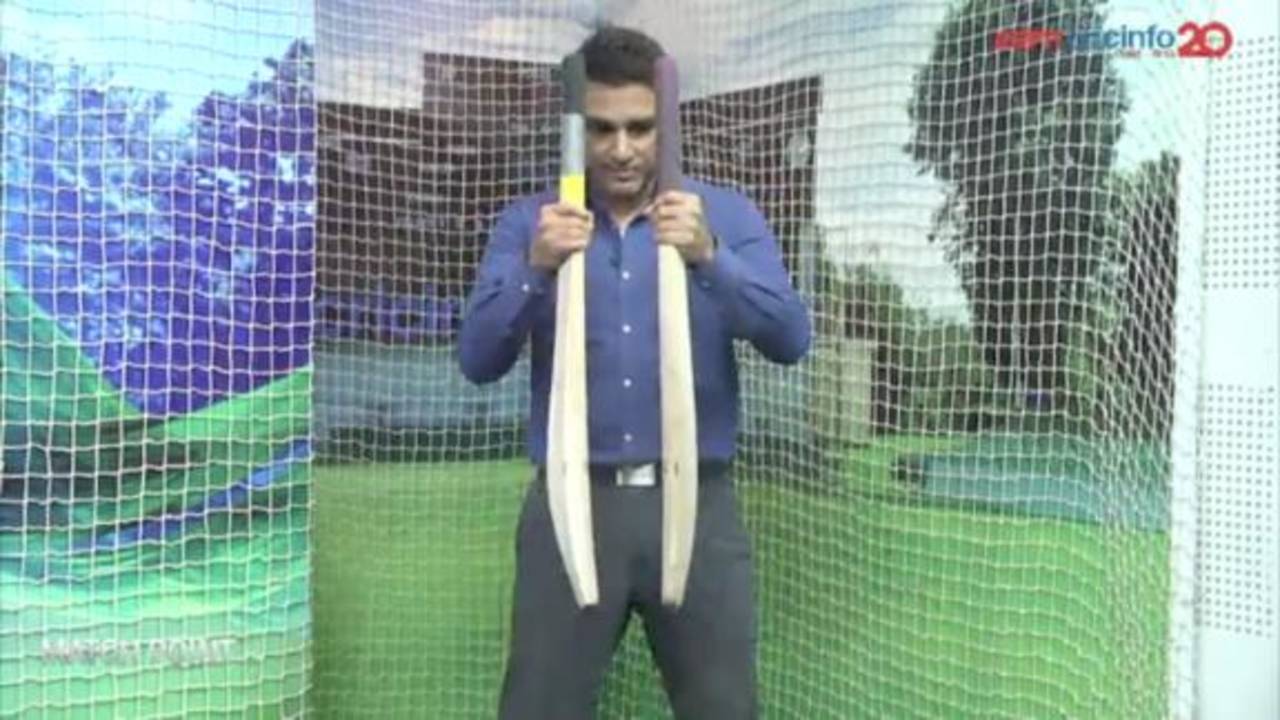David Richardson, the ICC chief executive, has conceded that modern bats have "shifted the balance" in favour of batsmen, especially in limited-overs cricket. The issue, Richardson said, was a growing concern and the ICC has begun to consider remedial steps, the first of which will come during the World Cup where boundary ropes are to be pulled as far back as 90 yards.
"The balance may have shifted a little bit too much because sometimes poor shots or mis-hits are going for six," Richardson told ESPNcricinfo in an
extensive interview. "Let us try and rectify that. What we have done up until now is try and maximize the size of the boundary. You will see for the World Cup, most of the grounds in Australia in particular, which allow for big playing surfaces, boundary ropes will be pushed back to at least 90 yards where possible."
Modern-day cricketers make statements with their bats. They have more bulge at the back, the edges are chunky (as thick as two inches), the whole bat is a sweet spot and it can send the ball much higher, much faster and much farther than once imagined. As the same time, in the name of entertainment, administrators have given consent to shorter boundaries at most venues thereby further hurting the case of the bowler.
However, the MCC's World Cricket Committee, at its last meeting in July, decided
against making changes to the law governing bat dimensions. The panel, comprising eminent former cricketers and captains, failed to find a consensus and it was decided to retain the current ruling on the size of bats, contained in Appendix E of the Laws of Cricket, which only limits the length of the bat to 38 inches and the width to 4¼ inches.
Such leniency has led to long-standing batting records being shattered. Last month, South Africa's ODI captain, AB de Villiers, hit the
fastest ODI century in 31 balls and 40 minutes, erasing the previous record set by New Zealand allrounder Corey Anderson less than a year ago, which had come off 36 deliveries.
According to Richardson, de Villiers deserved praise for his amazing feat. But he also acknowledged the fact that mis-hits could sail over the boundary ropes effortlessly deserved inspection. "No one begrudges an AB de Villiers, who plays some superb shots," he said. "Him, Brendon McCullum, Kumar Sangakkara, they are exceptionally talented and no one minds if they hit some great shots which go for six. But where some batsmen are mis-hitting balls and it is just carrying over the rope and going for a six instead of being caught at the boundary, that is what some cricket people believe has become unfair.
"The bats are so good these days that the sweet spot is much larger than it would have been 10-15 years ago. The MCC, as law makers, and the ICC will be looking at giving perhaps some consideration to placing limitations on the depth of a bat in particular."
Richardson spoke on a wide array of hot topics, including increasing incidents of on-field misbehaviour of players; playing conditions, such as use of two new balls at each end and the restriction of boundary fielders in ODI cricket; and the
promotion of Ireland and Afghanistan into the ODI ranking table, which could allow them to make a direct entry into the ten-team 2019 World Cup.
Asked if the ICC was not going against its own policy of spreading the game by shrinking the number of participating nations at the World Cup in four years' time, Richardson argued that the premier event needed to be far more competitive.
"It would if we were precluding the Associate Members from qualifying or finding a route directly to compete with the Full Members in bilateral cricket. But by creating that pathway it has enabled us to kill two birds with one stone. Firstly, it has expanded the opportunities for Associate Members to play at the highest level through bilateral series. Secondly, the World Cup itself, the premium event, without exception should be played between teams that are evenly matched and competitive."
Alongside promoting Ireland and Afghanistan, the ICC Board also decided to put in place a promotion and relegation system, involving the lowest-ranked Associate team in the ODI rankings taking on the winner of the WCL Championship to decide which side will take their place in the full rankings table for the next cycle. Asked why the relegation rule could not be applied to the lowest-ranked Full Member, Richardson said it may be considered in due course.
"It is a step by step process. The governance structure of the ICC is such that we have got Full Members and ODI members. The reason that they are Full Members is because they have a cricket economy as cricket-playing countries. There has been significant investment in those countries. So it makes sense to allow them to continue play each other bilaterally. Proper promotion and relegation [of Full Members] might be a step for the future, but at this stage it is too early to contemplate that."

